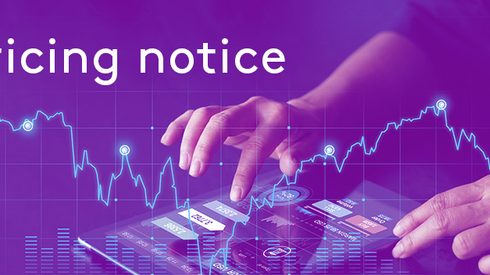Nobody has a crystal ball. Without using this mythical object, you might consider using a combination of statistics and fundamental analysis to help guide your hedging decisions. A standard method to gauge potential returns uses historical commodity prices and realized volatility. Another great source of information is a probability graph based on implied options volatility.
An effective hedging tool you should have at your disposal is a graph showing the probability that a price will hit a target based on implied volatility from option prices.
That’s right; options traders price the likelihood that an asset will be in the money by a specific time, allowing you to gauge the probability that a commodity price will reach a target.
Probability graphs based on commodity option implied volatility are a sentiment gauge of market participants based on actual trades that have taken place.
What is a Call and a Put Option?
Recall that a financial option is a right but not the obligation to purchase or sell a commodity at a specific price on or before a certain date. A call option gives the buyer the right to buy a commodity, while the right to sell is called a put option.
If you buy an option, you pay a premium to the seller, who is compensated to provide you with the right to buy or sell a commodity. The premium is determined by market participants who decide how volatile a commodity will be in the future.
Based on market-derived implied volatility, you can determine whether the option will likely settle in the money on or before the expiration date. Implied volatility is the critical variable that drives option pricing.
Determining a distribution
A statistical way you can evaluate where the price might be in the next few days is to look at the history of the returns of a commodity price. This information will provide you with a mean return and the standard deviations of the returns, which you can use to generate a historical return distribution.
But what about the future?
Looking at enough stock and ETF pitch books, we all know that past returns do not guarantee future performance. It is only a guide. Another method you have at your disposal to create a future projection of probabilities is an option price. An option price uses the current price, interest rates, strike price, and implied volatility to create a premium.
The implied volatility is the market’s forecast of a likely change in a commodity price. It can be used to derive an option price, allowing you to create a probability graph.
Recall that one standard deviation covers about 68% of all returns, while two standard deviations cover approximately 95% of all the returns in a distribution.
An example
Using the current price of CME Copper and an implied volatility level, you can determine if future prices will be above or below a specific price level and the probability of each strike price being “in the money” by a particular date. You can then chart the distribution based on what is priced in the options market and create a probability calculation by a specific date.
Why future bets matter
The benefit of understanding the probability of where implied volatility places a distribution is pertinent. While a probability graph does not guarantee where the price will end up in the future, it gives you a gauge of where options traders think it will go. It can be used as a stand-alone guide or in conjunction with a probability range created by historical price changes.
The bottom line
The upshot is that by using implied volatility, you can create a probability graph that will provide the market’s interpretation of the probability of where a commodity price could be at a specific point in the future.
Creating a probability graph that will gauge what others think is another excellent risk management tool you can add to your hedging arsenal. One of the best ways to do this is to use the probability mechanism embedded in option prices.
If your business engages in commodity hedging, you might consider deploying a probability graph that can provide you with pertinent information to help you decide if it’s the right time to hedge. Contact our risk solutions team if you are interested in more details about creating a probability graph or learning more about hedging.






